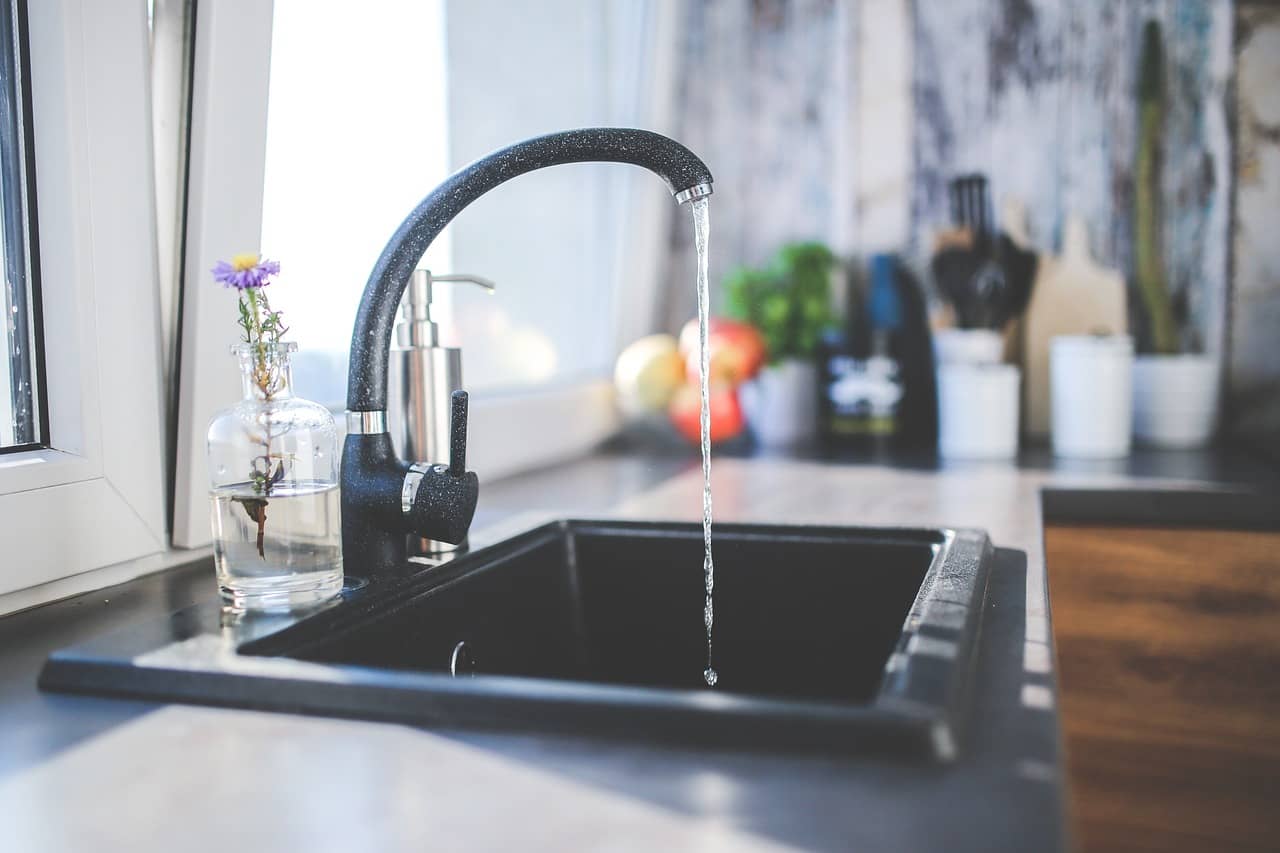Picture the scene: you’re in the bathroom at the top of the house. You want to run a nice relaxing bath. You turn on the faucet and are met with a delay that feels like forever before the water gets hot because it has to travel all the way up from the basement. Is there a better way? Yes, there is! Fitting a hot water heater recirculating pump can illuminate the delay between turning on the faucet and getting that warm stream you’re looking for.
Understanding Hot Water Recirculation
The delay between turning the tap and getting the hot water you’re looking for is caused by the distance between your faucet and hot water heater. In traditional models there can often be quite a run of pipework between these two points. These traditional models are by far the most common in American homes though that is slowly changing.
This run of pipe, which could stretch the whole length of your home, loses heat pretty quickly. That means that a few minutes after the hot flow stops, the water in the pipe has cooled down. If you want more, you’ll have to wait for the flow from the heater to reach you again as the water runs.
Recirculating pumps do away with this delay. By constantly cycling water through your system from the heater and bringing it back again to be reheated, they ensure that you’re always met with warm water when you turn the tap.
How A Hot Water Recirculation Pump Works
Hot water heater recirculating pumps are relatively simple. They work by keeping the water in your pipes moving around from the water heater to your fixtures. They consist of the following components:
- The Pump: A simple mechanism that draws water through the pipes from the water heater.
- A Check Valve: These allow water to flow in only one direction, preventing backflow
- An Optional Control Unit: These allow you to program the hot water recirculation system, coming on at either timed intervals or on demand. Without this unit, you’ll have a continuous flow.
These components together create a recirculation loop in your hot water system. Water flows around this loop, starting and ending at the heater. This means that you’re always met with hot water straight away, even in the furthest fixtures on the system.
There are variations in the design available, such as using dedicated recirculation lines or cold water lines. Dedicated recirculation lines are quicker, but they require a more complex and disruptive installation process. Cold water line versions can be retrofitted into your existing plumbing.
The Benefits of Installing a Hot Water Recirculation Pump
Installing a hot water heater recirculating pump comes with numerous advantages, covering comfort, convenience, energy efficiency and financial. Let’s look at them in more detail:
Instant Hot Water
The number one difference you’ll see is in how quickly you get hot water from your fixtures. Whether it’s a bath, tap or anything else, wherever it is in your home, you’ll get hot water almost instantly. This saves time and gives a real luxury feel as well as opening up options for placing bathrooms throughout the property.
Increased Comfort
No one likes those awkward moments where you’re standing around waiting for the shower to get hot. The further away your bathroom is from the water heater, the longer those moments stretch but even a moment can seem like a lifetime when you really want a shower. With a hot water heater recirculating pump system installed, those moments are almost entirely banished.
Reduced Water Waste
Not only is the delay between turning on the faucet and getting in the warm bath a waste of time, it’s a waste of water. Water costs money and it requires pumping and treatment which cause environmental damage. Wasting it is not good for anyone, so anything that can make your use more efficient can only be a good thing.
Increased Energy Efficiency
This boost to efficiency doesn’t only come on the municipal scale either. A timed or on-demand hot water recirculation system can boost your home’s efficiency too. By only coming on when needed, you get all the luxury without much increase in your bills. If you’re considering installing a hot water recirculating pump, it’s generally best to opt for a control unit that lets you harness these savings.
Increased Home Value
A recirculating pump system can be a great selling point in a competitive housing market. People appreciate the high-spec, luxurious touches that make life that little bit more pleasant and these systems are exactly that.
Considerations for Installation
While hot water recirculating systems certainly bring a touch of the lux to any home, there are things to think about before installing one.
Home Size and Layout
Generally, the bigger the home or more complex the layout, the more work is involved in installing a recirculation system. If you’re going for a new installation with a dedicated line, this might increase the costs significantly. Not only will you have to pay for more materials, it will also take more labor to install.
If nothing else, you’ll need a bigger pump.
Plumbing System Configuration
Different configurations of existing plumbing configuration will impact on the design and installation of the system. Simple systems will generally be easy to retrofit, but more complex ones might need the installation of dedicated recirculation lines.
Water Heater Type
Not all pumps are compatible with all types of water heaters. If you have a more modern tankless system, it’s important to ensure that your pump will be compatible. Likewise, opting for a pump which is too low powered will produce worse results.
Energy Efficiency Considerations
As a powered system, a hot water heater recirculating pump will have running costs. These can be kept to a minimum by opting for energy efficient models and installing either a timed or on-demand control unit.
Professional Installation
Water and electricity don’t mix, so installing a recirculation system is generally best left to those who know what they’re doing. While a simple retrofit shouldn’t be overly complex, there are still safety concerns. A qualified plumber will be able to keep you up to code and ensure the most efficient installation.
Maintenance and Troubleshooting
While a hot water recirculating system needn’t be a particularly complex installation, it is mechanical. As with anything with moving parts, it will eventually need maintenance and replacement. When well looked after you can expect to get anything up to 15 years out of your pump.
Regular inspections, to ensure that the pump is working efficiently are the first port of call. It’s generally a good idea to schedule a yearly visit from a plumber to cast an eye over your plumbing systems, but things like pumps benefit from these inspections more than most parts. This will give you a heads up about developing problems before they become urgent.
As water contains contaminates and tanked water heaters tend to develop sludge and corrosion over time, filters are a great investment. Keeping these clean and free from debris will extend the life of your pump.
Troubleshooting Common Issues
Here’s how to deal with the most common problems with a hot water recirculation pump:
No Hot Water
Check the power supply, timer, flow (listen for odd sounds within the pump). If none of these present an answer, check your water heater.
Pump Noise
This could be down to a few issues:
- Air in the line: air has found a way in to the closed loop. Use the bleed valves to let it out.
- Wrong sized pump: If the noise starts straight after installation, it’s likely that the pump is either too big or too small. Call a professional to replace it.
- Bad Bearings: humming or whirring noises suggest the pump’s bearings are failing. They’ll need to be replaced.
- Clogged system: you’ll need to drain and clean the pipes to remove the debris clogging them.
- System Malfunctions
These can range from the control unit to the pump itself. If it’s not easy to diagnose from the system’s manual, a plumber will be able to help.
Choosing the Right Hot Water Heater Recirculating Pump
When picking out your pump there are a few things to keep in mind:
- Pump Size and Flow Rate: Bigger homes and higher demands need larger pumps. Make sure yours is up to the job before you buy.
- Energy Efficiency: There are a range of efficiency features on modern pumps. These could include things like variable speeds and timed or demand-based control systems. Each comes with a cost, but the long-term savings can make them worth investing in.
- Noise Levels: As a luxury item, it’s worth investing in a quieter pump to increase the effect. Having the relaxation of a bath on demand is somewhat undone by a rattling noise whenever you turn on the faucet.
- Warranty and Support: Hopefully nothing will go wrong, but if it does, you’ll want to be covered. Opt for a pump with a good warranty from a company with a good reputation for customer support. The same goes for the plumbers you get to install it.

